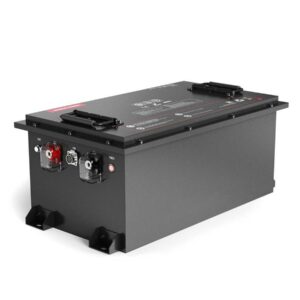
What are the disadvantages of zinc silver batteries?
Zinc-silver batteries suffer from high costs due to silver content, limited cycle life (~50 cycles), and sensitivity to overcharging, which accelerates degradation. Their liquid electrolyte also risks leakage, and silver oxide forms dendrites causing internal shorts. These factors make them impractical for consumer electronics despite high energy density in aerospace/medical niches.
How to Safely Dispose of and Recycle Car Batteries
What makes zinc-silver batteries expensive?
Silver’s market price (~$28/oz) and complex multi-layer separators dominate costs. Each cell requires precise silver-zinc oxide electrodes, increasing manufacturing complexity versus lithium-ion.

Zinc-silver batteries use ~10–15g of silver per kWh—50× more than lithium’s cobalt usage. The stack pressure during assembly must stay within 20–30 psi to prevent separator damage, requiring specialized machinery. For example, a 12V 50Ah zinc-silver pack costs ~$900 vs. $300 for LiFePO4. Pro Tip: Avoid zinc-silver for budget projects—replacement costs outweigh initial energy density benefits.
Why do zinc-silver batteries have short lifespans?
Silver migration and zinc electrode shape changes degrade capacity after 50–100 cycles. Dendrites pierce separators, causing irreversible self-discharge rates up to 10% monthly.
During discharge, zinc ions dissolve into the electrolyte and redeposit unevenly, creating mossy structures. Silver particles also migrate, forming conductive bridges. Practically speaking, a zinc-silver battery powering a satellite might last 2 years versus 10+ for lithium. But what if you need daily cycling? These batteries lose 30% capacity in 6 months under 80% DoD—use them only for intermittent applications like emergency beacons.
| Chemistry | Cycle Life | Cost per Cycle |
|---|---|---|
| Zinc-Silver | 50–100 | $1.80 |
| LiFePO4 | 2,000–6,000 | $0.03 |
How does overcharging affect zinc-silver batteries?
Over 2.1V/cell causes oxygen evolution, drying the electrolyte and warping electrodes. This permanently reduces capacity by 15–25% per overcharge event.
Zinc-silver cells lack stable SEI layers like lithium, so excess voltage splits water into hydrogen/oxygen. Beyond voltage limits, gas buildup ruptures seals—imagine a balloon overinflating. For example, charging a 6-cell pack beyond 12.6V risks leaks. Pro Tip: Use chargers with ±0.5% voltage accuracy and automatic termination. Budget chargers? They’re a recipe for rapid failure.
Battery Expert Insight
Are Duracell Car Batteries a Good Choice for Your Vehicle?
FAQs
Can zinc-silver batteries be recycled?
Yes, but silver recovery requires smelting at 1,000°C—facilities are scarce. Most end up in landfills, posing environmental risks from potassium hydroxide leaks.
Do zinc-silver batteries work in cold climates?
No—temperatures below -10°C spike internal resistance, cutting capacity by 40%. Lithium-ion handles -20°C with minimal loss.
